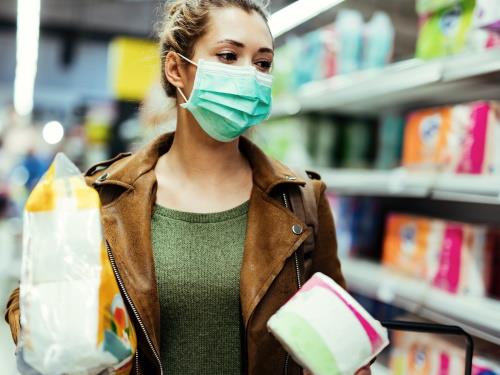Face coverings - what you need to know

COVID-19 can spread by droplets from coughs, sneezes and speaking.
This is why social distancing, hand washing, and covering coughs and sneezes is so important.
Wearing a face mask, or covering, may reduce the spread of COVID-19 and help to protect others. With new laws coming into force from Friday, we’ve broken down what you need to know.
What is a face covering?
A face covering is something which safely covers both the nose and mouth. This could be a reusable or single-use face mask, or you may also use a scarf, bandana, religious garment or hand-made cloth covering (so long as they securely fit round the side of the face).
A face covering should:
- cover your nose and mouth while allowing you to breathe comfortably
- fit comfortably but securely against the side of the face
- be secured to the head with ties or ear loops
- ideally include at least two layers of fabric
- unless disposable, it should be able to be washed and dried without causing damage
You should not share your face covering with anyone else.
When to wear a face covering
From Friday, you must by law wear a face covering in the following places:
- On public transport
- Shops and supermarkets
Measures can be taken if people do not comply with this law. You may be denied service, or instructed to wear a face covering. If necessary, the police can issue fines of £100.
You are also strongly encouraged to wear a face covering in other enclosed public spaces where social distancing may be difficult.
What are the exemptions to this law?
There are some circumstances whereby people are not expected to wear face coverings on public transport or in shops and supermarkets.
This includes:
- young children under the age of 11
- not being able to wear a face covering due to a physical or mental illness or impairment, or disability
- if you are travelling with or providing assistance to someone who relies on lip reading to communicate
- to avoid harm or injury, or the risk of harm or injury, to yourself or others
- to eat or drink, but only if you need to
- to take medication
- if a police officer or other official requests you remove your face covering
Can you make your own face covering?
Yes! If you want to make your own face covering, instructions are widely available online.
For more information on how to make a face covering with materials from around your home, you can visit the Big Community Sew website for step-by-step video tutorials, and other useful tips and advice. You can also find ideas in our Things to do – face coverings article.
22nd July 2020